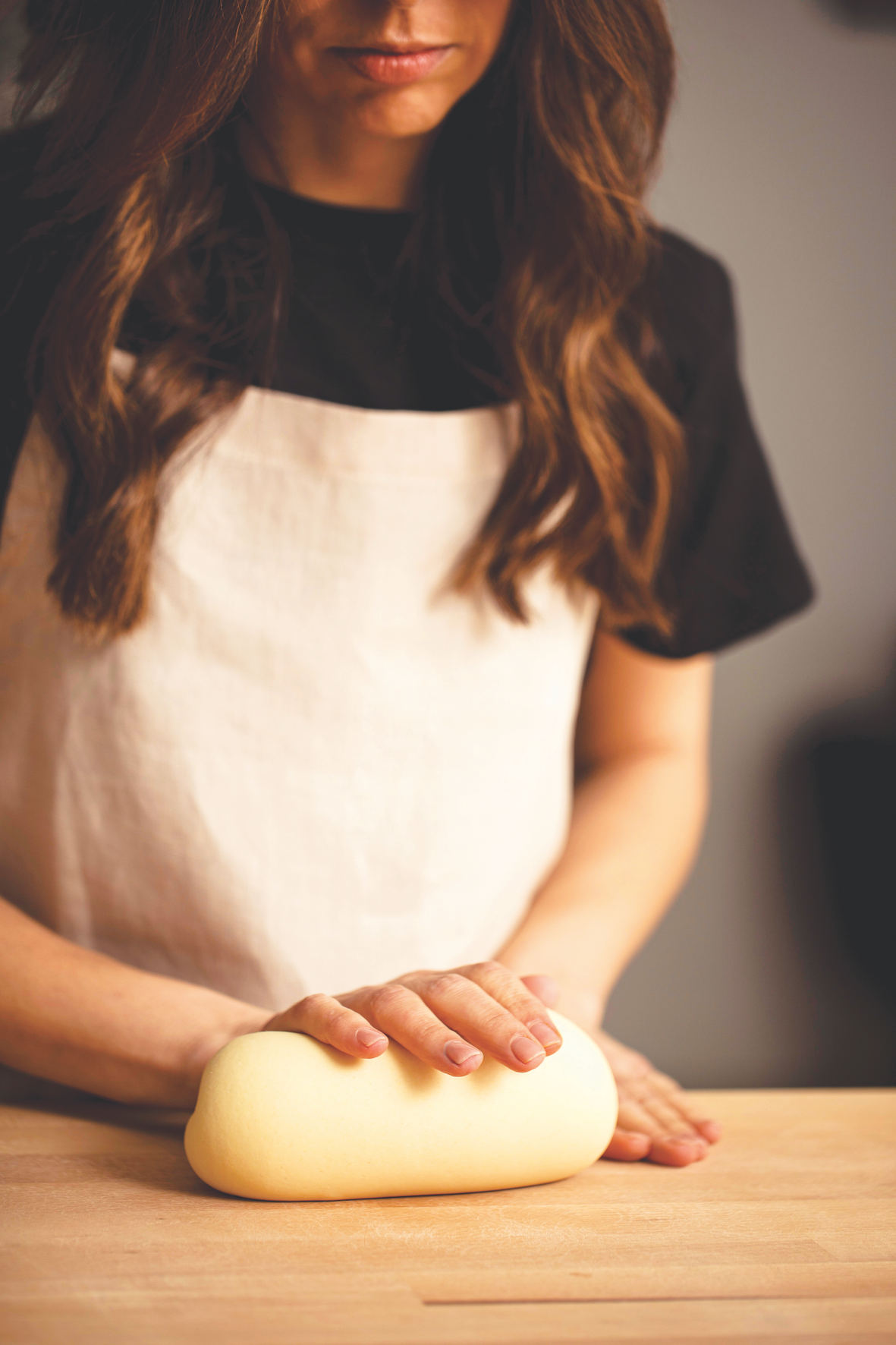Rich Egg Pasta
The method of any pasta dough is somewhat similar, but the exact measurements of the ingredients is imperative to the result of your dough. This is why I have listed my ingredients for this recipe in weight form. The addition of the semolina and the egg yolk not only lends a richer golden colour to the dough, but also provides more of a ‘bite’ to the texture.
Ingredients
- 400g tipo ‘00’ flour
- 50g semolina
- 255g egg, approximately 4 whole eggs and 2 yolks depending on their size
Method
The addition of the semolina and the egg yolk not only lends a richer golden colour to the dough, but also provides more of a ‘bite’ to the texture.
The method of any pasta dough is somewhat similar, but the exact measurements of the ingredients is imperative to the result of your dough. This is why I have listed my ingredients in weight form.
In a medium size mixing bowl, measure out your flour and semolina. Combine the two grains together before gently turning out onto a wooden board. Using the base of the mixing bowl, gently press into the centre of the flour to create a well, ensuring you don’t press too firmly that the board is visible underneath. Measure the eggs and egg yolks into a separate bowl, then slowly slide them into the centre of the flour well.
Using a fork, gently whisk the eggs, starting with breaking the yolks to start blending. Once this has been achieved, use the fork to slowly incorporate some of the flour by working through in a circular motion. Continue this motion until the egg is not as ‘wet’ as it started and most of the flour has been slightly absorbed. Place the fork down, and now, using a dough scraper, start to ‘cut’ the flour and bringing it all into the centre to further incorporate – see pictures below for reference. Continue this, before starting to work the dough with your hands bringing it all together. If you have opted to use a bowl, you will need to transfer the dough to your work surface now to commence the kneading process. With the palm of your hands, knead the dough in an anti-clockwise motion, picking up any loose flour as you progress. Continue to knead for approximately 8 to 10 minutes. I am convinced some of the biggest problems that can be encountered with homemade pasta comes right back to having not spent the time to knead it enough. The dough is ready when it is smooth, well combined, and has a slight spring to it when pushed with your index finger.
Wrap the dough in clingwrap, and set aside to rest for 30 minutes.
NB:// If you do not plan to shape your pasta straight away, leave the dough to rest in the refrigerator. When you are ready to make your pasta, bring the dough out as least 30 minutes prior to bring it back to room temperature. It also goes without saying, there are many factors that can alter the result of your dough when kneading - your environment, work surface and climate to name a few. But do not let that deter you. Practice, patience and persistence will have you confident with your pasta in no time.
This dough has been shaped into tonnarelli using a traditional chittara. You can use the tonnarelli attachment on your pasta machine, or alternatively, you can use this pasta to create any filled pasta, or an alternative shape that requires egg dough.







0 comments